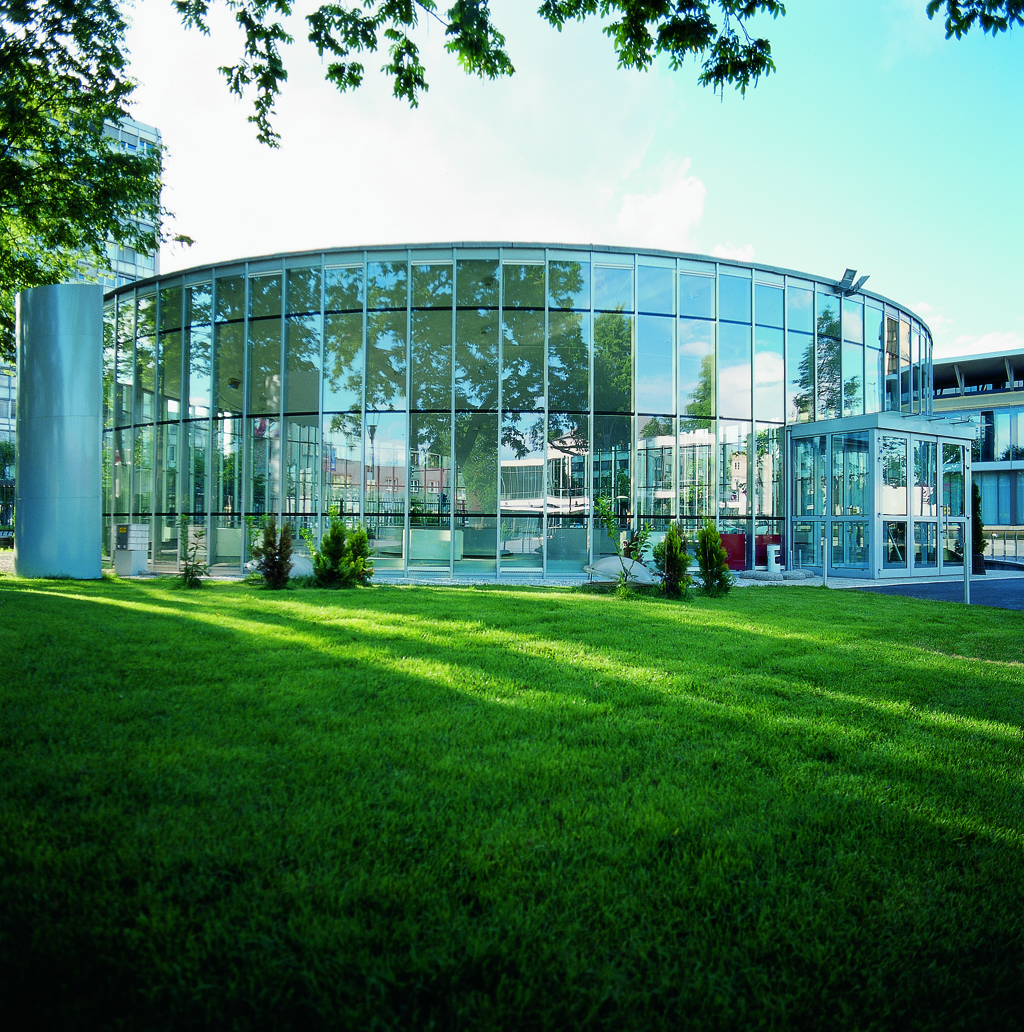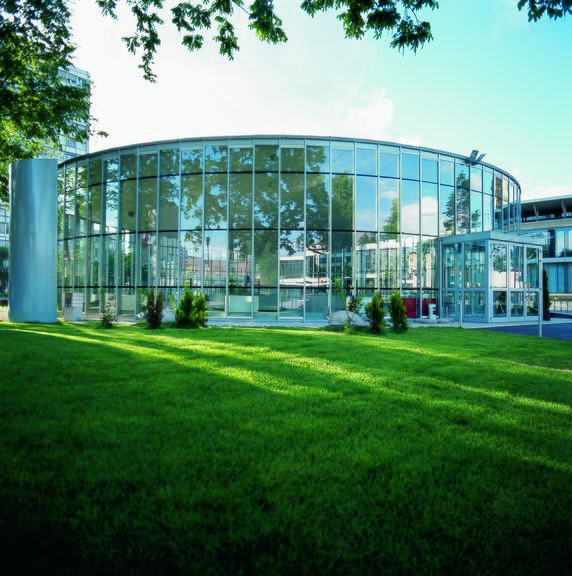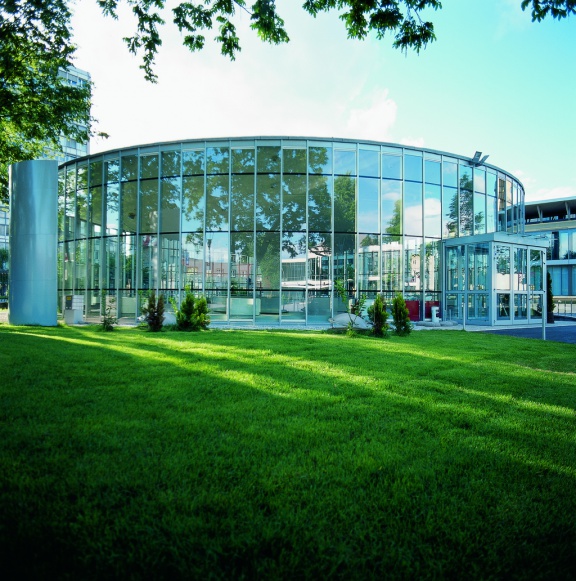Gospodarsko razstavišče, Ljubljana Exhibition and Convention Centre
Background
Between the two World Wars Ljubljana was the only city conducting fair activities on the Slovene territory. In 1921 the company Ljubljanski velesejem (Ljubljana Grand Fair) was established and the fairs took place in Tivoli Park by Celovška Cesta. The modern Ljubljana fairground was established in the mid-1950s and the construction accelerated due to the 7th Congress of the Communist Party of Yugoslavia that took place in Ljubljana in April 1958. The ambitious halls and pavilions were built from 1954 till the late 1960s according to the plans of Branko Simčič, Milan Mihelič, and Ilija Arnautović. The complex was restored in the 2000s and is a remarkable example of modern functionalist architecture in use.
Culture on the Ljubljana fairground
Some of the culture highlights at GR include concerts by Louis Armstrong (1959) and Duke Ellington, as well as the legendary Slovenska popevka Festival (1964 and again in 2010s). GR also served as a venue for the large survey exhibition on the work of architect Jože Plečnik (1986), and the first book fair in Ljubljana. In the early 1990s, Ljubljana tried to feature on the international art market with the Ars Antiquitas Fair, but the unsuccessful attempt was soon abandoned.
In 2012 GR hosted the Muza Festival (M for music, U for umetnost/art, Z for založništvo/publishing, and A for antiques) on books & arts to popularise culture among the citizens of Ljubljana and to introduce more cultural content to the fairground. The festival has joined forces with Slovene publishers, municipal public cultural institutions, the Slovenian Association of Fine Arts Societies (featuring the May Salon), and many other cultural organisations. The festival in 2012 remained the sole edition.
International networking
Ljubljana has established strong international relations in the fair industry. Already in 1925 the Ljubljanski velesejem company was among the founding members of UFI (Union des Foires Internationales / Global association of the Exhibition Industry) and the Gospodarsko razstavišče, Ljubljana Exhibition and Convention Centre remains its member. It holds memberships also in the ICCA (International Congress and Convention Association), CEFA (Central European Fair Alliance), and IFOAM – International Federation of Organic Agricultural Movements.
External links
- GR by Branko Simčič on the Architectural Guide
- One of the GR architectural landmarks explained by the Razvezani jezik - The Unleashed Tongue (in Slovenian)





